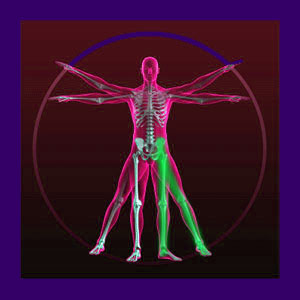
Structural short leg syndrome occurs when one or more leg bones are longer on one side than the other. Although skeletal short leg syndrome is treated throughout many sectors of the healthcare industry, there is no evidence that the condition is inherently pathological or painful, although the potential for symptomatic expression certainly exists.
Skeletal short leg conditions are far more objectively diagnosed than functional short leg, which is a much more controversial diagnosis. Structural leg length differences can be easily proven via any form of comparative diagnostic imaging, such as x-ray, CT scan or MRI. Like many other structural irregularities in the anatomy, this form of leg length differential is often unfairly blamed for causing pain, when in some instances it is coincidental to any symptoms which might exist. However, since some cases are truly symptomatic, proper and complete diagnostic evaluation is always recommended.
This patient guide explores the diagnosis and treatment of skeletal short leg syndrome from a factual and not financially-motivated perspective.
What is Structural Short Leg?
Structural differences in leg length are defined as cases where the patient demonstrates different comparative leg bone length from side-to-side or demonstrates joint abnormalities that change the relative position of the bones from side-to-side. These anatomical variations are easily diagnosed using advanced imaging, although visual presentation or symptomology may alert caregivers to their presence ahead of imaging confirmation.
Leg length differentials can create uneven posture and might even make physical functionality and ambulation difficult when the legs vary greatly in length from side-to-side. Many healthcare providers believe differences in leg length also place inordinate stress on the spine and skeletal musculature and may therefore be a primary cause of back pain and sciatica.
It is crucial to separate structural cases of short leg from more common functional cases. Treatment is completely different and if the diagnosis is not 100% sound, then therapy might do more harm than good.
Structural Short Leg Treatment
The gold standard for virtually all cases of skeletal short leg syndrome involve the use of orthotic shoes or shoe inserts to level the anatomy from side-to-side. Precise measurements are taken of each leg bone and the difference in size can be compensated for using orthotics on one or both feet. Most often the difference from one leg to the other is not too large, making for an easy fix with proper treatment. However, the larger the differential from side-to-side, the more difficult it may be to resolve the condition using orthotics alone, since the joints tend to reside at different levels and might still create functionally disabling or painful expressions.
Some hand-on therapists, such as chiropractors and massage therapists also treat structural leg length differences with manual therapy. However, while these treatments may provide some relief through actual efficacy in treating the effects of the leg length difference, none of these modalities will have any curative effects on the underlying skeletal problem.
Symptomatic versions of skeletal short leg might also require pain management in the form of drug therapies or other more constructive methods of care. We highly recommend avoiding the poisonous dangers of pharmaceutical products in favor of natural and constructive care practices, such as massage, acupuncture and pain coaching.
Structural Reasons for Short Leg Syndrome
There is no proof that structural leg length differences are inherently painful or problematic. Many people demonstrate minor leg length differences and have no functional limitations or pain whatsoever. After all, the human anatomy is a marvel of adaptation and other structures can easily transfer stresses to balance the body even when the legs are truly off by a noticeable amount.
Some patients are misdiagnosed as having pain that is being caused by a leg length differential, when all along, their symptoms are being driven by a completely unrelated process. In these cases, treatment generally provides poor results and patients often find themselves spending considerable amounts of time and money seeking out the ideal orthotics when their pain can not be successfully treated with this approach.
In order to improve the chances of effective treatment for back pain or sciatica that may be related to a positively diagnosed leg length differential of any variety, it is crucial to eliminate all other potential causations, including spinal and muscular sources, disease-related concerns and the very common incidence of mindbody causation.





